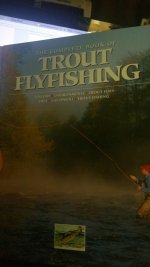pcray1231 wrote:
Troutnut.com is a great resource. It's organized biologically, with order, family, genus, species, etc.
The hard part, even for experts, is comparing scientific classification to common name. Especially when the latter varies by region. Frankly, the scientific classification makes more sense. For instance, BWO covers at least a dozen species from entirely different families, with major differences in regard to habitat, hatching behavior, etc. But March Browns and cahills are very close relations, and aside from slight differences in size, color, and time of year, act very much the same.
What you'll find when learning bugs, is that you don't need no science for size and color. Anyone can just see that. Where knowing the exact bug matters is behavior. Does this species inhabit silt, gravel, or heavy currents? So when it starts hatching, you know what water to seek out. Does it molt on the bottom, and "fly" to the surface? Think wet flies. Crawl to shallow rocks? Well then fish nymphs in pocket water. Or swim to the surface and emerge on top? If the dun ain't working, try a floating nymph. Well, big t storm downed all spinners. You should know the sulfur spinners will be back tomorrow, cause they return in 1 day. But March Browns take 3-5.





